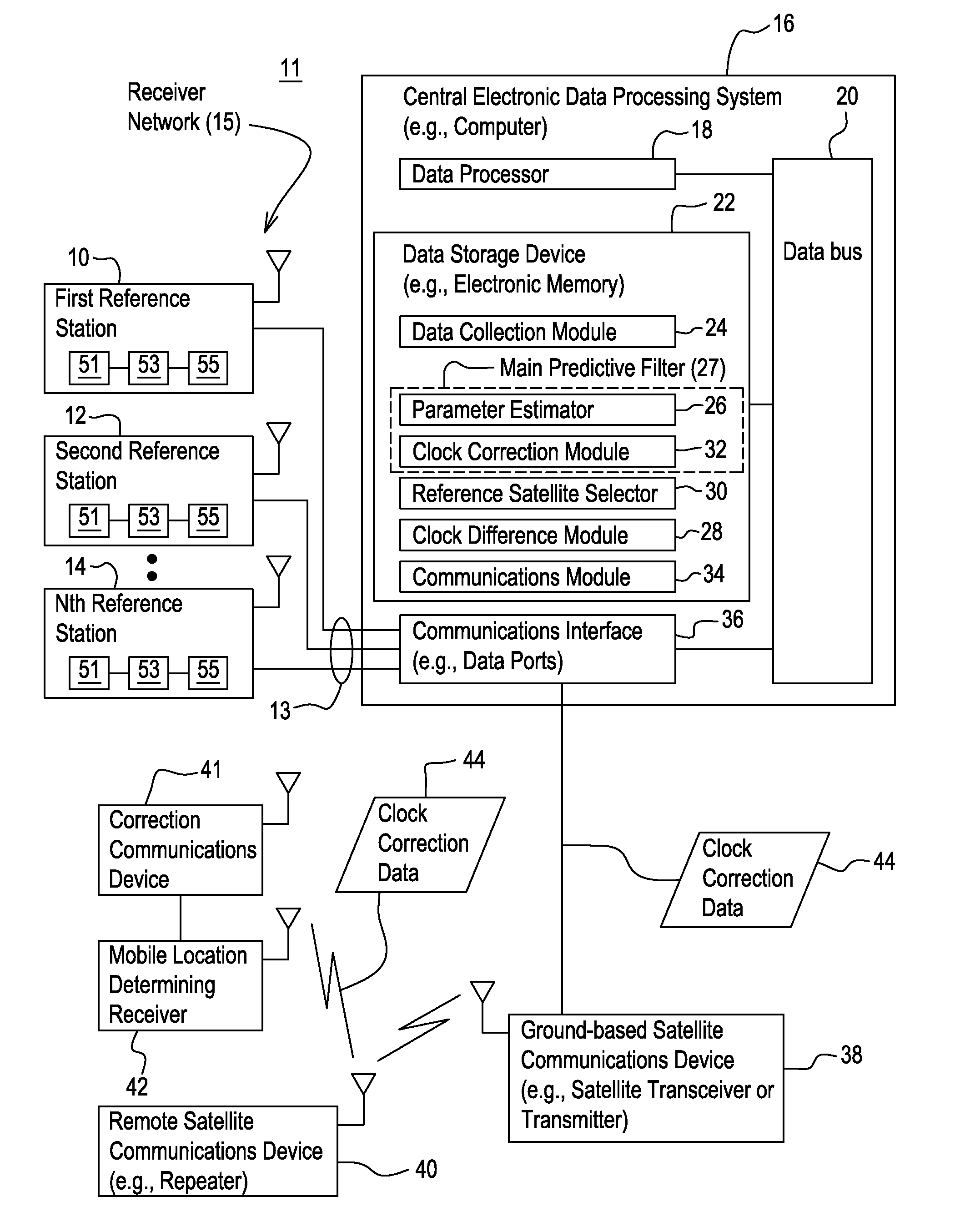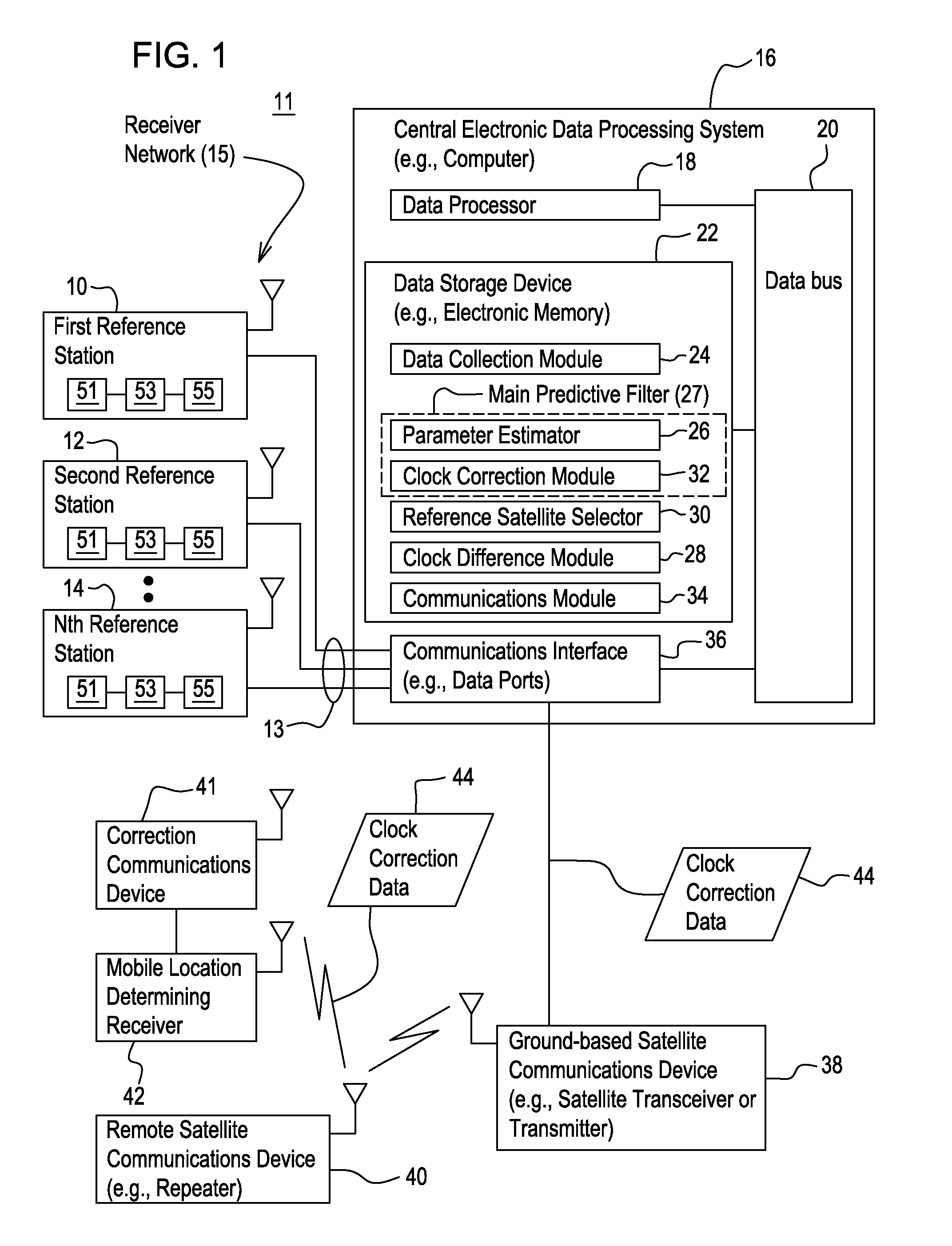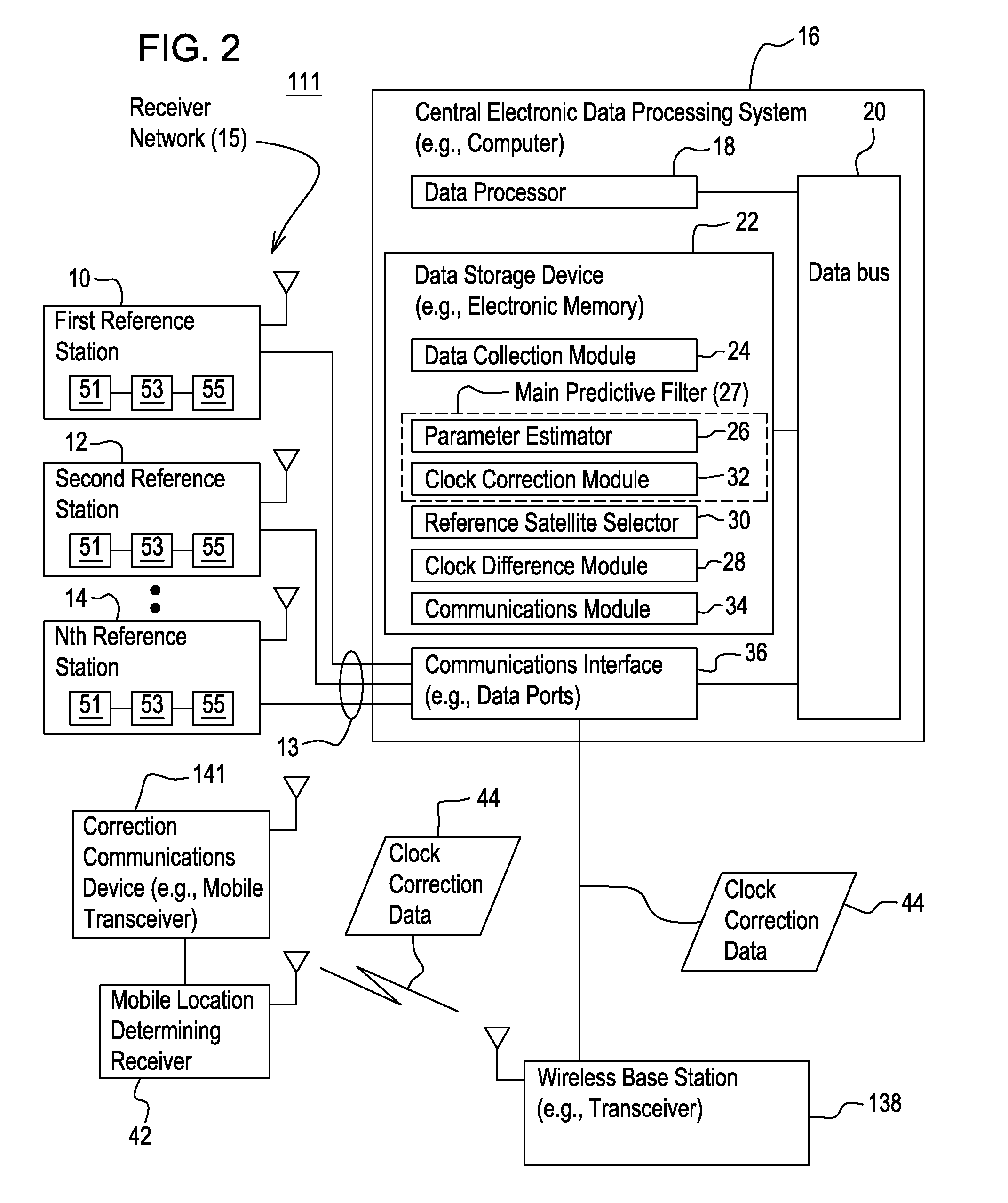Method and system for determining clock corrections
a technology of clock correction and satellite navigation system, which is applied in the field of method and system for determining clock correction for satellite navigation system, can solve the problems of prior art approach requiring expensive atomic clocks and inaccurate position estimation, and achieve the effect of facilitating the determination of accurate position estimates
- Summary
- Abstract
- Description
- Claims
- Application Information
AI Technical Summary
Benefits of technology
Problems solved by technology
Method used
Image
Examples
Embodiment Construction
[0014]In accordance with one embodiment of a system 11 for determining clock corrections for a satellite navigation system (e.g., GNSS system), the system 11 facilitates the real-time determination of accurate and smooth satellite clock corrections to broadcasted satellite clock error data to support enhanced reliability and accuracy of mobile location-determining receivers 42 that can use clock correction data 44 in real-time. The method and system produces clock correction data 44 (e.g., clock error corrections) that is well suited for providing enhanced accuracy and resolution in determining the position or velocity of a mobile location-determining receiver 42, or an associated object, in real-time.
[0015]In one embodiment, the system 11 comprises a receiver network 15 that is capable of communication with a central electronic data processing system 16 via one or more communications links 13. The central electronic data processing system 16 is coupled to a ground-based satellite c...
PUM
 Login to View More
Login to View More Abstract
Description
Claims
Application Information
 Login to View More
Login to View More - R&D
- Intellectual Property
- Life Sciences
- Materials
- Tech Scout
- Unparalleled Data Quality
- Higher Quality Content
- 60% Fewer Hallucinations
Browse by: Latest US Patents, China's latest patents, Technical Efficacy Thesaurus, Application Domain, Technology Topic, Popular Technical Reports.
© 2025 PatSnap. All rights reserved.Legal|Privacy policy|Modern Slavery Act Transparency Statement|Sitemap|About US| Contact US: help@patsnap.com



